Whether you’re a novice home cook or an experienced chef, understanding how to zest a lemon is a total game-changer! Learn everything you need to know in this post, including ideas for how to incorporate lemon zest into savory and sweet recipes.
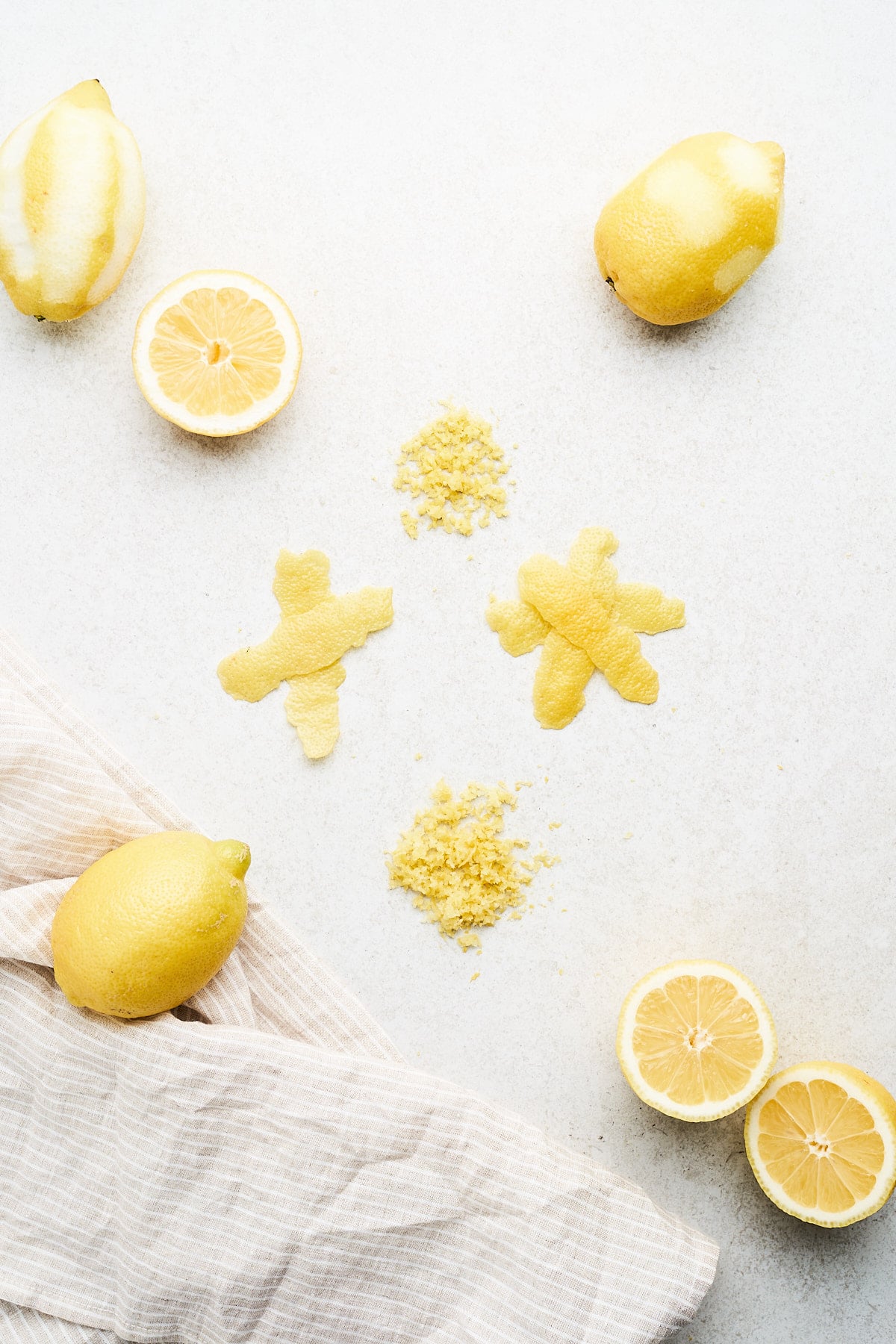
I’m all about that lemon flavor, so I love to incorporate lemon zest into any recipe I can! Not only does it help reduce waste but it offers so much flavor to both baking and cooking.
In addition to lemon juice, lemon zest adds an intensely bright element that elevates any dish from good to great! Think lemon blueberry muffins, cookies, pies, bars, dressings, roasted vegetables, tofu, and more.
Different zesting methods affect the texture and amount of zest you produce. Also, the technique you choose may depend on the tools you have at hand and the dish you’re preparing, so it’s important to have other options at your disposal.
With that said, let’s learn what lemon zest even is and how to zest a lemon four ways!
What is Lemon Zest?
Lemon zest is the very outer layer of a lemon’s peel, and it’s the part of the lemon where the essential oils reside. This means it’s packed with vibrant citrus flavor and aroma.
What lemon zest is not is the white portion underneath. This is called the pith, and it’s quite unpleasantly bitter and chewy. Make sure you stop zesting once you reach the pith!
If you want to learn more about lemons, check out our lemons 101 post.
How to Zest a Lemon
There are many ways to zest a lemon, depending on the recipe you’re making. Here are four basic methods to get you started:
Microplane
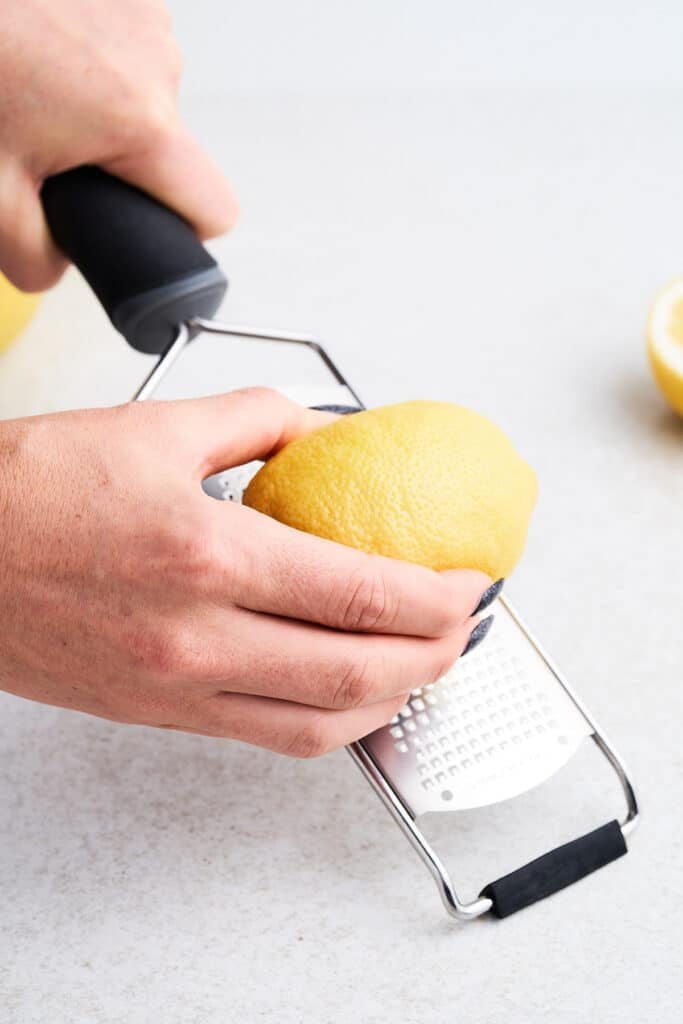
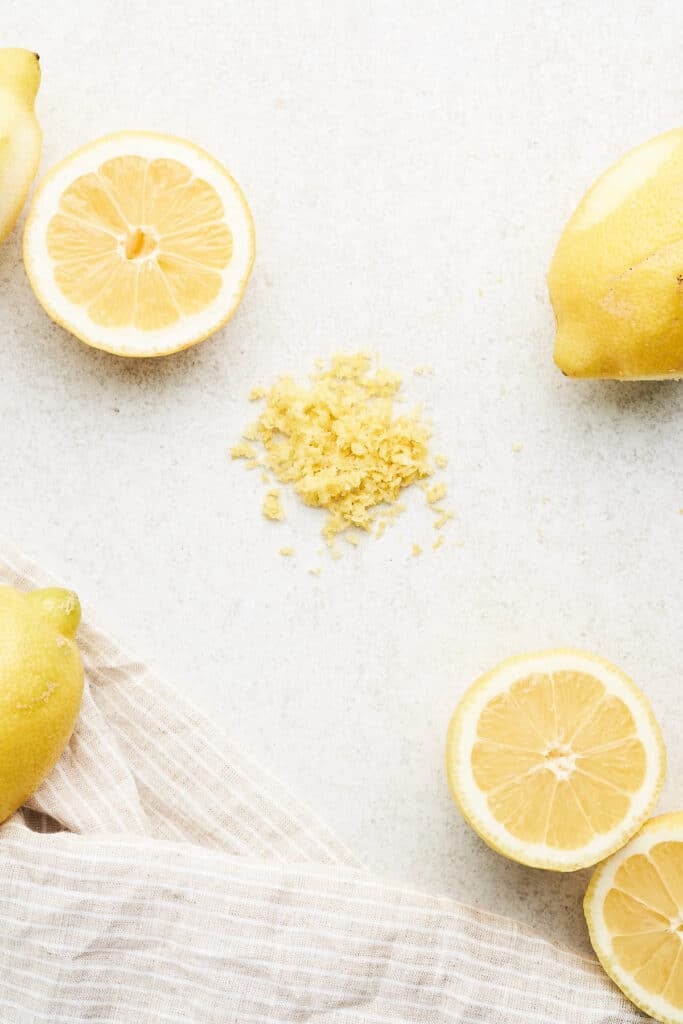
A microplane, which is now almost synonymous with the term “rasp grater,” has a fine-toothed texture that makes it my favorite tool for zesting lemons. The resulting zest is extra fine, so it’s perfect for incorporating into batters and sauces.
- Begin by rinsing your lemon under cold water to remove any wax or impurities, then pat it dry.
- Hold the microplane in one hand and the lemon in the other. For better control, you can stabilize the microplane on your counter or plate.
- Gently run the lemon down the blade, taking care to only skim off the yellow part of the peel. Rotate the lemon as you go to zest around the entire surface.
Box Grater
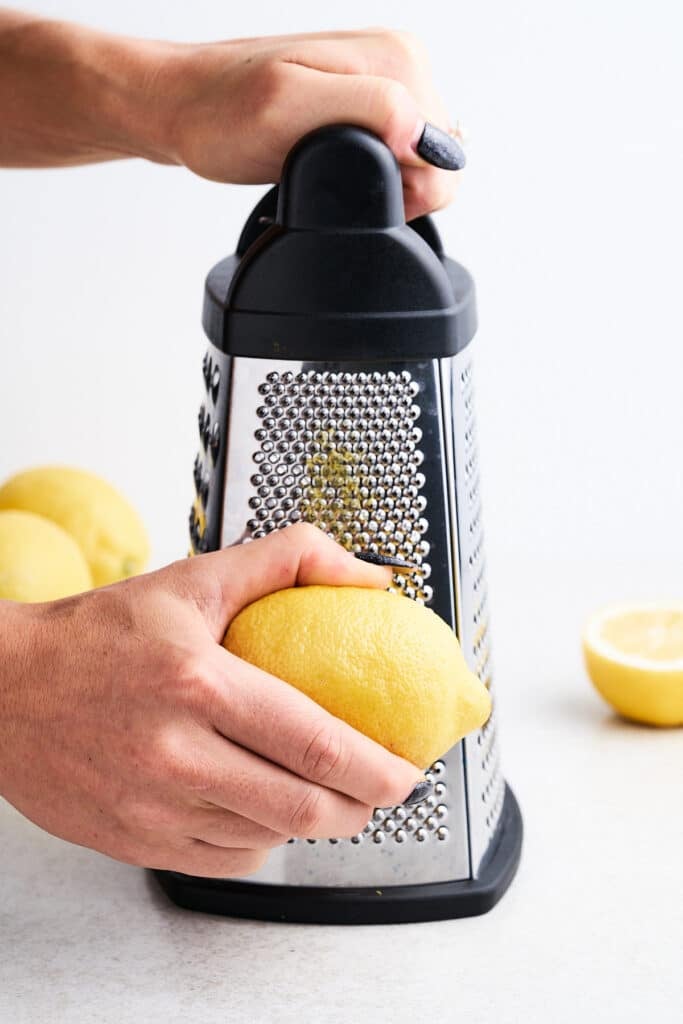
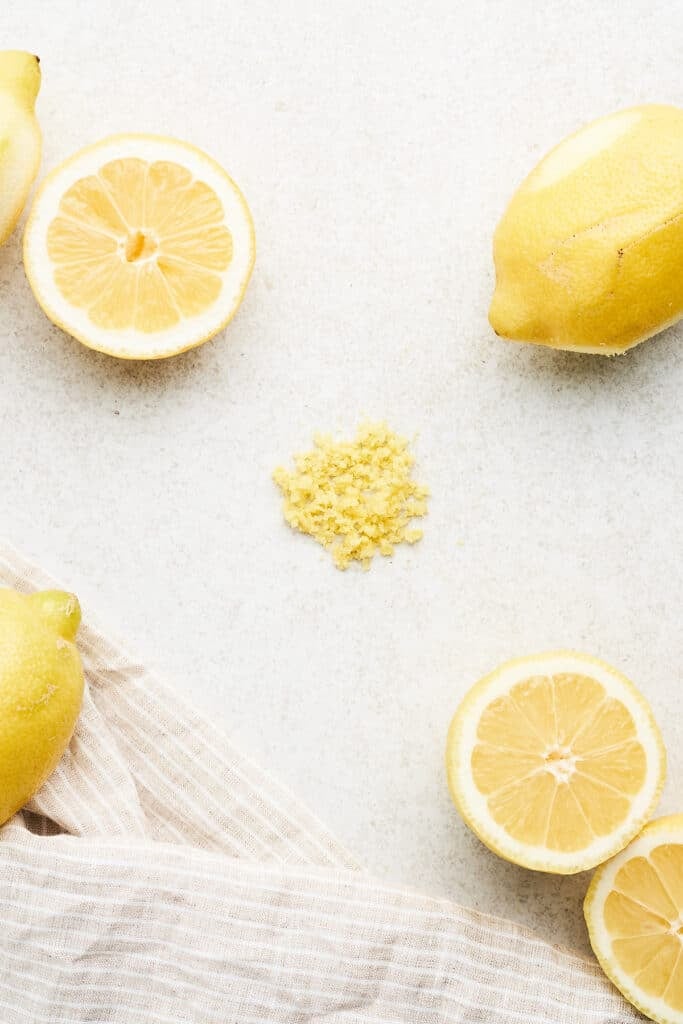
If you don’t have a microplane, the smaller holes on the side of your traditional box grater can act as an effective lemon zester in a pinch. They produce slightly larger zest compared to a microplane.
- As with the microplane, clean and dry your lemon first.
- Hold the box grater firmly with one hand and the lemon with the other.
- Using the side of the grater with the smallest holes, run the lemon downwards over the grater, stopping when you get to the white pith.
Sharp Knife
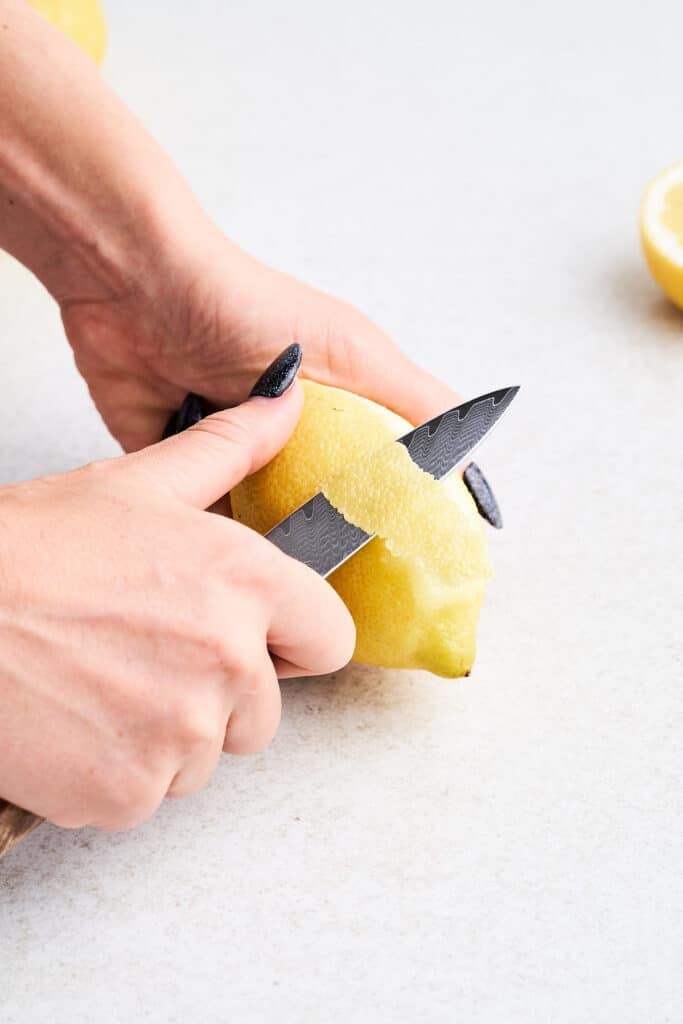
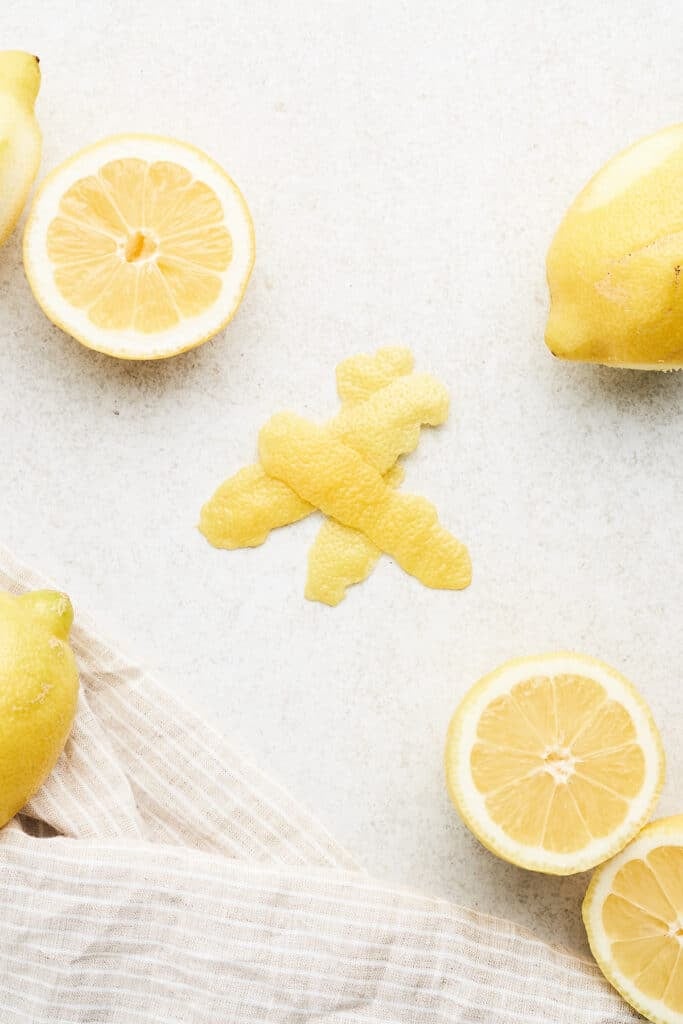
If you’re aiming for larger pieces of zest to infuse into syrups or garnish dishes, a sharp paring knife can do the trick.
- Hold the lemon in the palm of your non-dominant hand and a sharp paring knife in the other.
- Following the curve of the fruit, gently and carefully cut from the top downwards to peel off strips of the skin, taking care not to include the pith.
- Depending on your recipe, you might want to finely cut these strips into smaller zest slices.
- If you’re not comfortable holding the lemon, slice off the top and bottom portions to make a flat surface. Using the same motion, make cuts from the top to the bottom that follow the curve of the lemon.
Vegetable Peeler
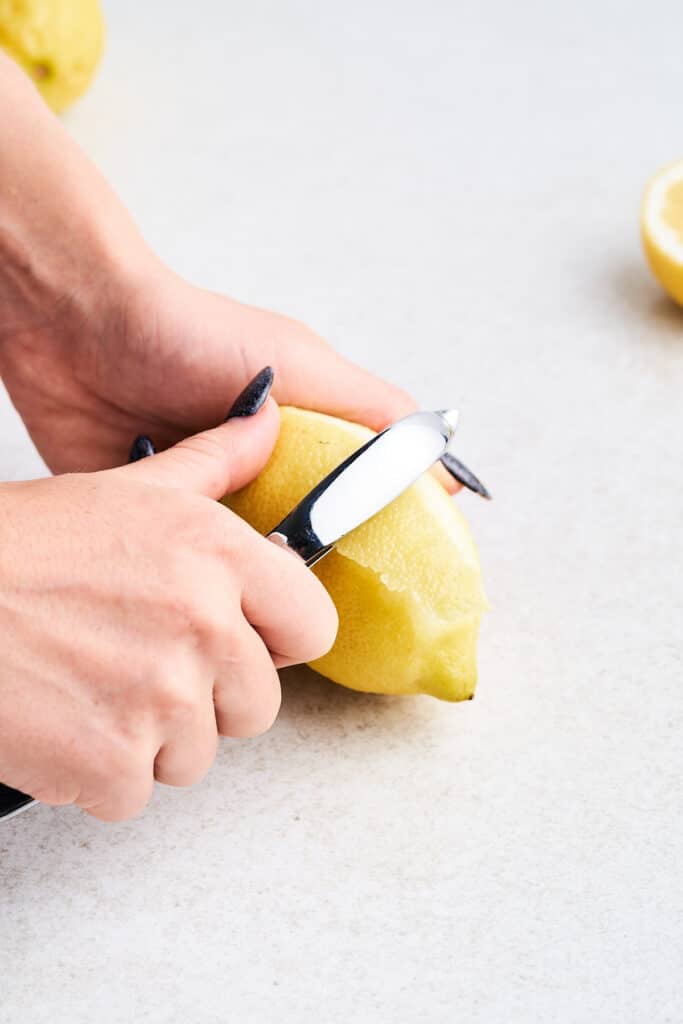
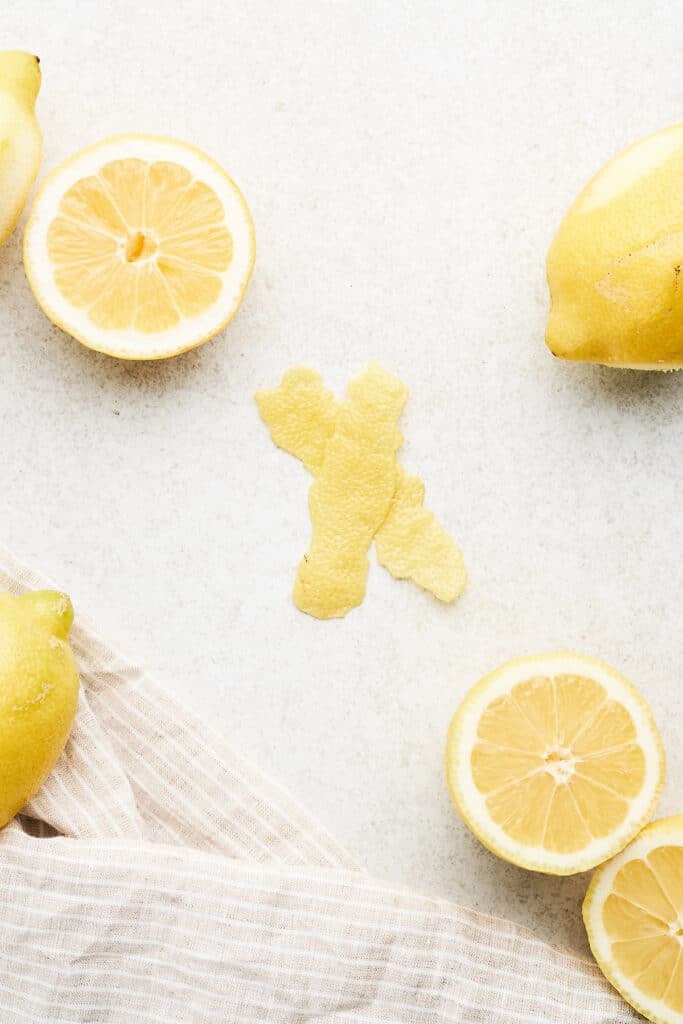
A vegetable peeler is another tool that can yield long, wide strips of zest, perfect for flavoring drinks or garnishing desserts.
- After washing and drying your lemon, hold it in one hand and the peeler in the other.
- Draw the peeler from the top to the bottom of the lemon in one swift motion, creating long, wide strips.
- As with the other methods, ensure that you are only removing the colored part of the skin and not the bitter white pith beneath.
How to Use Lemon Zest in Cooking and Baking
Lemon zest can bring fresh and zingy notes to a wide array of dishes. Try some of these ideas:
- Baking: Add lemon zest to cakes, cookies, compotes, and muffins for a pop of citrus flavor. You can even add it to roasted rhubarb or lemon creamsicles!
- Cooking: Sprinkle it over roasted asparagus, incorporate it into marinades, or stir it into gremolata linguine for a refreshing twist. You can also try this lemon basil risotto!
- Drinks: Garnish your favorite cocktails or hot tea with a strip of lemon zest. Or, add some to a creamy orange smoothie.
Lemon Zest FAQs
A medium-sized lemon generally yields about 1 tablespoon of zest. However, this may vary based on the size of the lemon and the tool you’re using for zesting.
If you have leftover zest, you have a few options to choose from. You can freeze it for later, dry it, or even make a homemade lemon-infused oil!
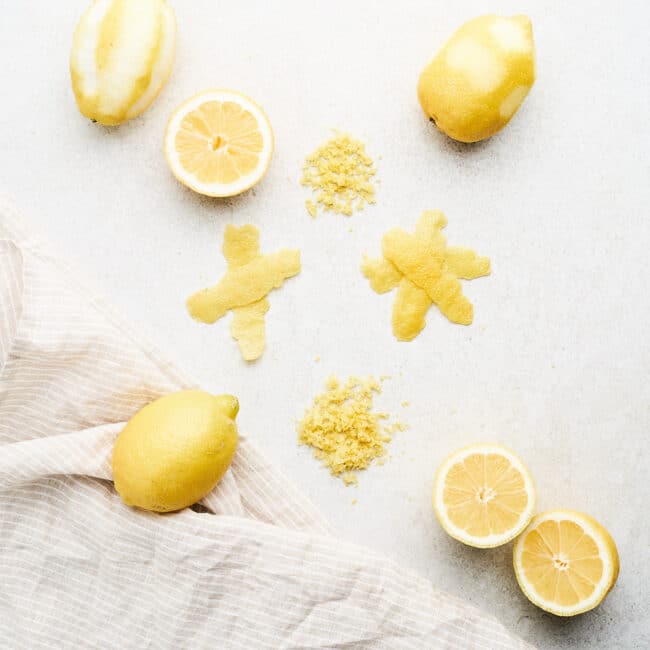
Ingredients
- 1 lemon
Instructions
Microplane
- Position: Hold the microplane in one hand and the lemon in the other. For better control, you can stabilize the microplane on your counter or plate.
- Zest: Gently run the lemon down the blade, taking care to only skim off the yellow part of the peel. Rotate the lemon as you go to zest around the entire surface.
Box Grater
- Position: Hold the box grater firmly with one hand and the lemon with the other.
- Zest: Using the side of the grater with the smallest holes, run the lemon downwards over the grater, stopping when you get to the white pith.
Sharp Knife
- Position: Hold the lemon in the palm of your non-dominant hand and a sharp paring knife in the other.
- Zest: Following the curve of the fruit, gently and carefully cut from the top of the fruit downwards to peel off strips of the skin, taking care not to include the pith. Depending on your recipe, you might want to finely chop these strips into smaller zest slices.
- Alternative: If you’re not comfortable holding the lemon, slice off the top and bottom portions to make a flat surface. Using the same motion, make shallow cuts from the top to the bottom that follow the curve of the lemon.
Vegetable Peeler
- Position: Hold the lemon in one hand and the peeler in the other.
- Zest: Draw the peeler from the top to the bottom of the lemon in one swift motion, creating long, wide strips. As with the other methods, ensure that you are only removing the colored part of the skin and not the bitter white pith beneath.
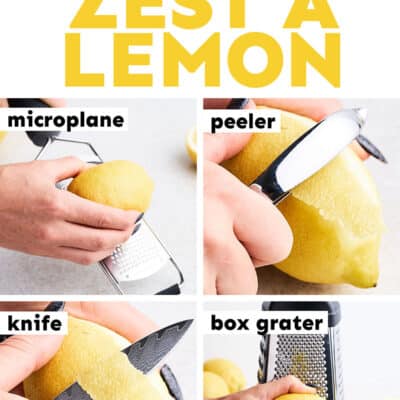
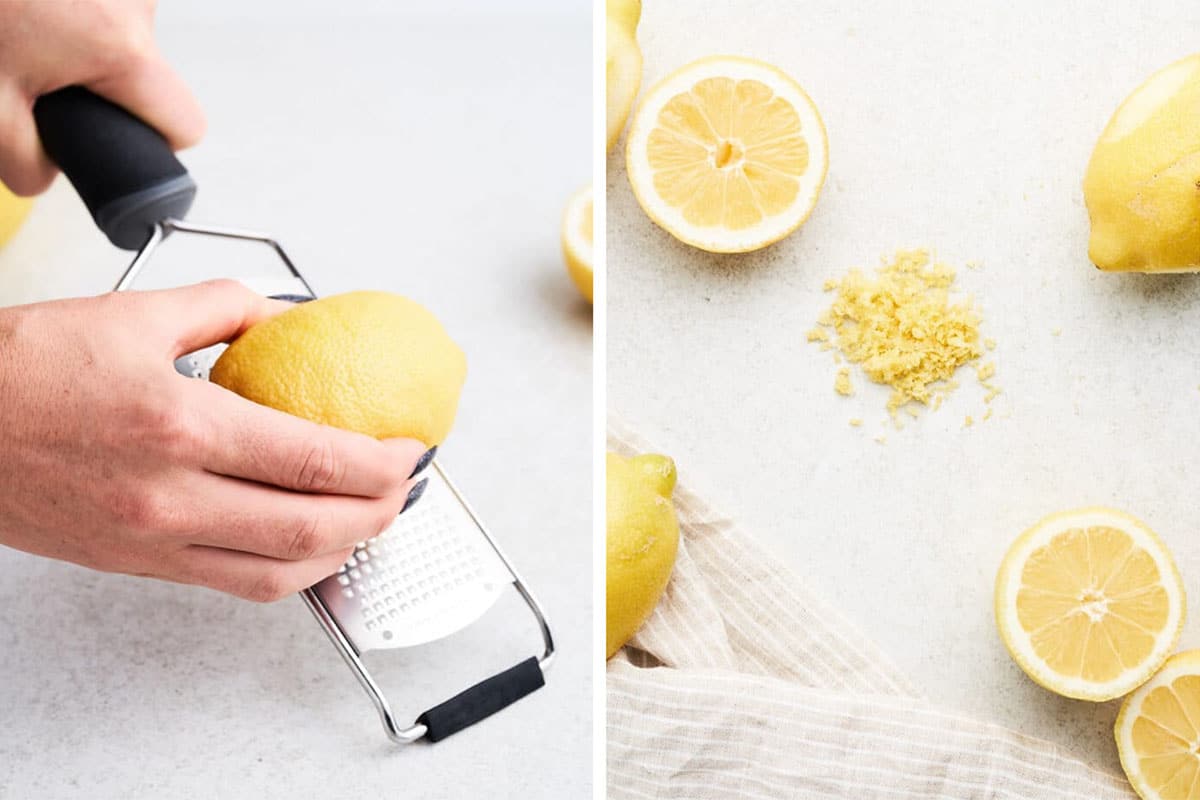
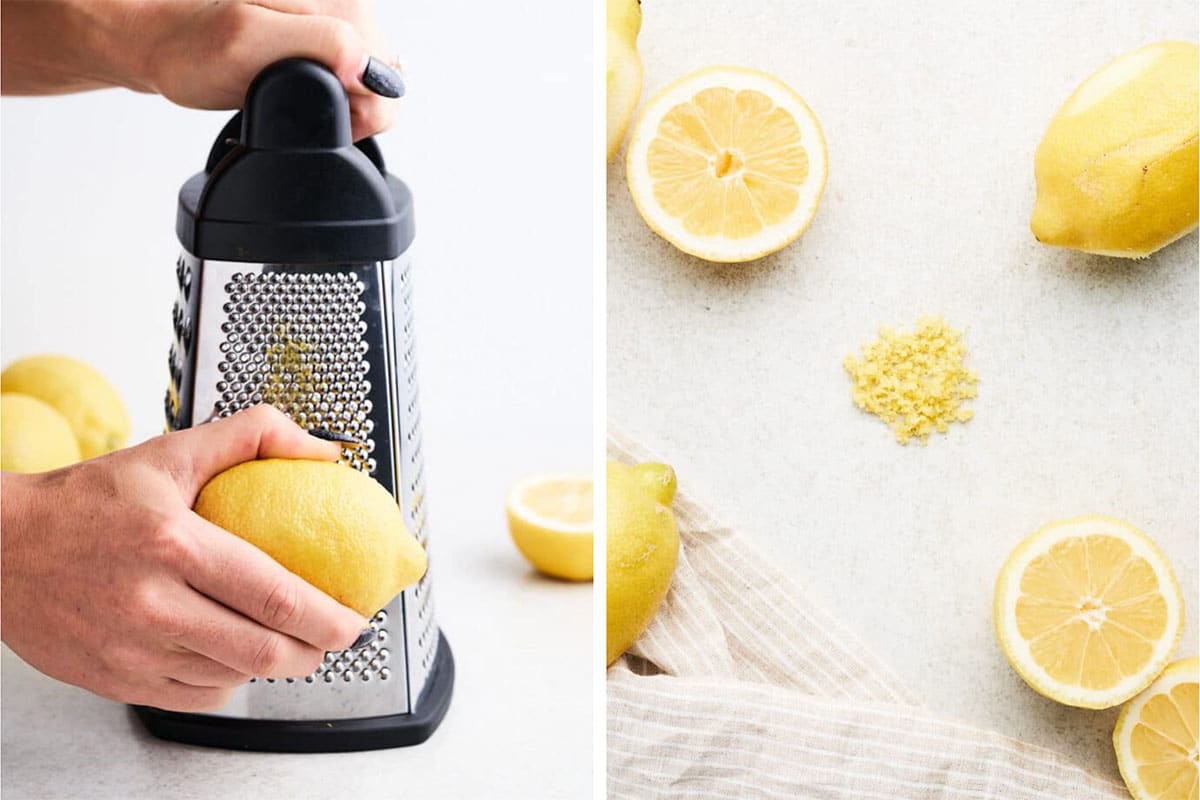
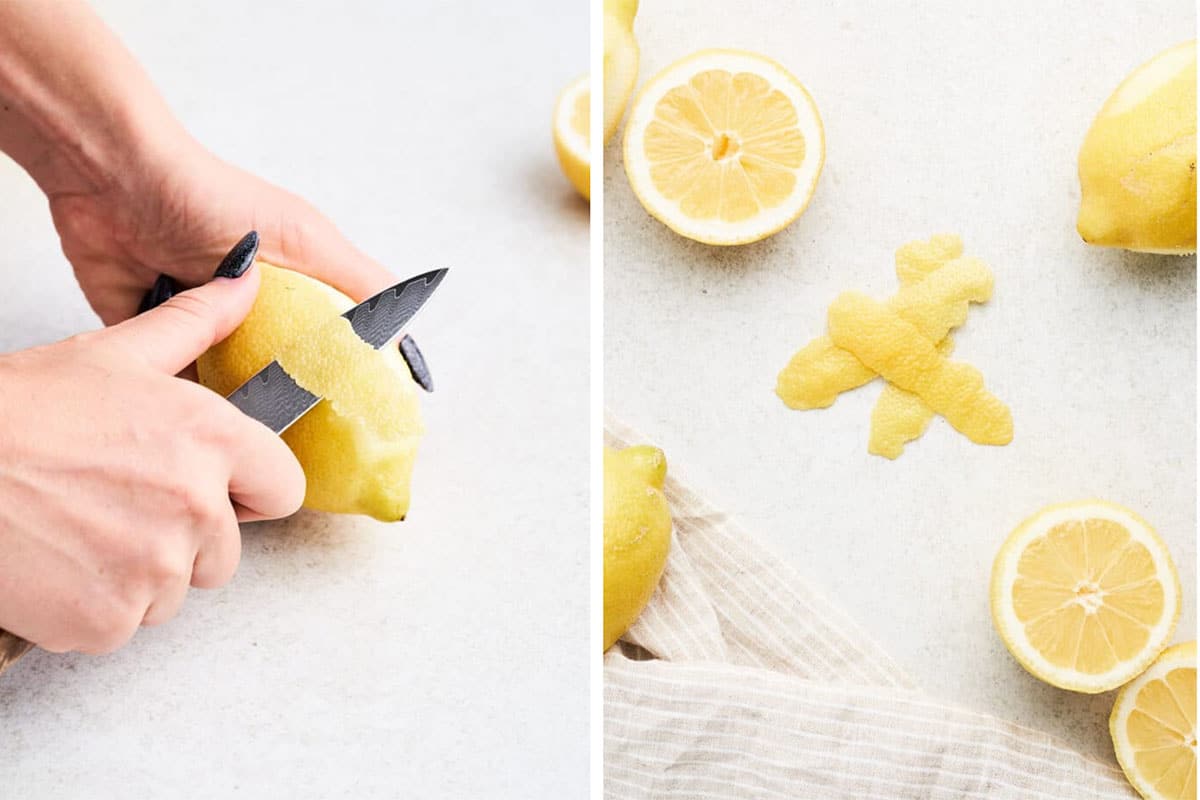
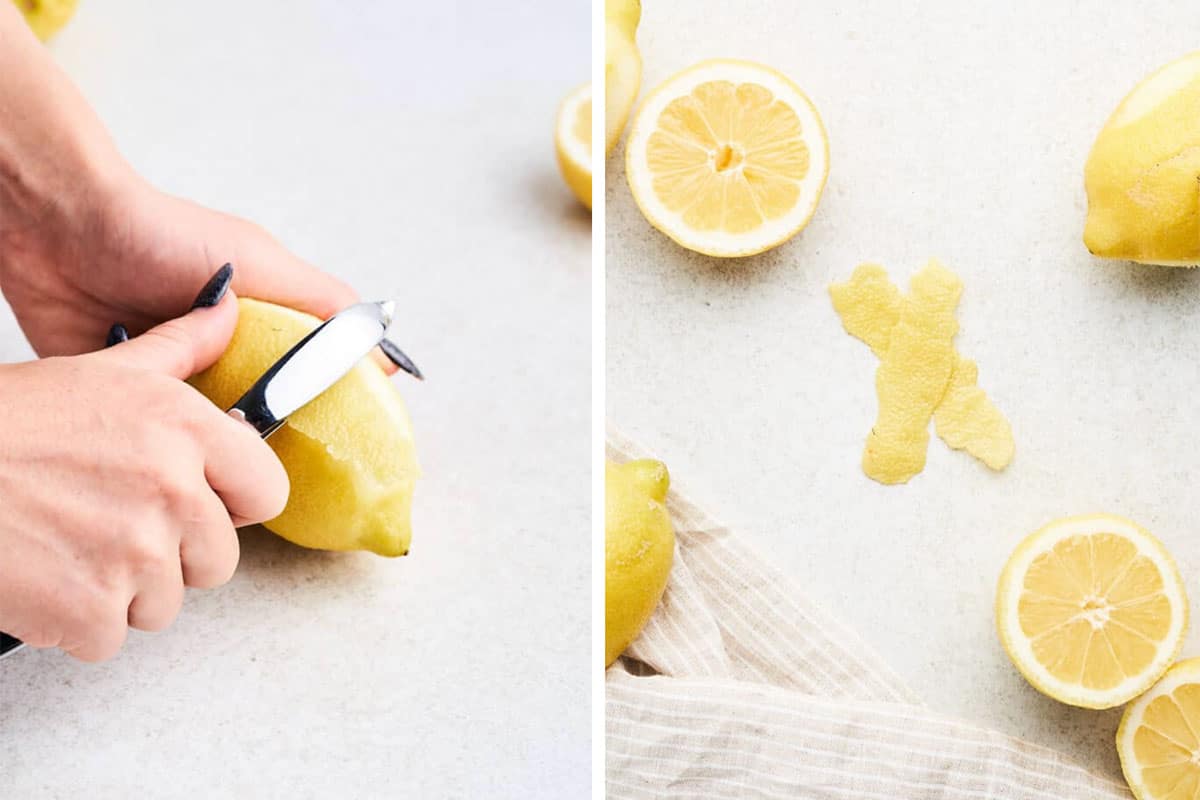
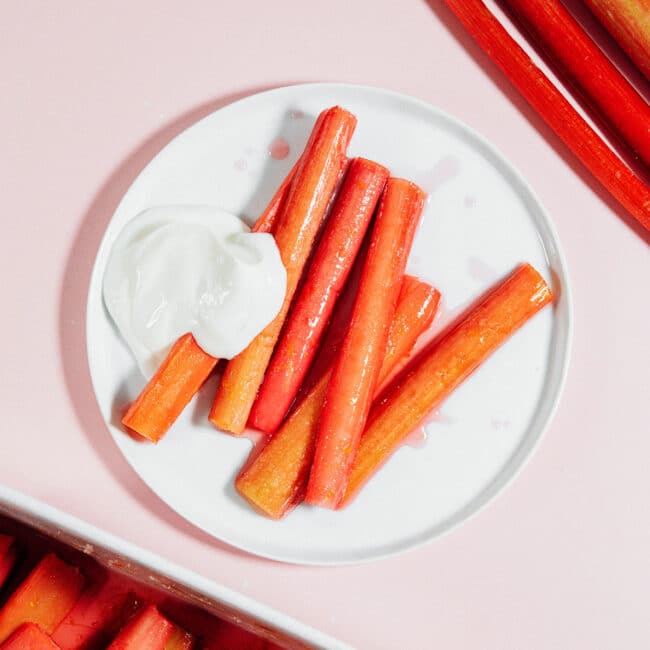
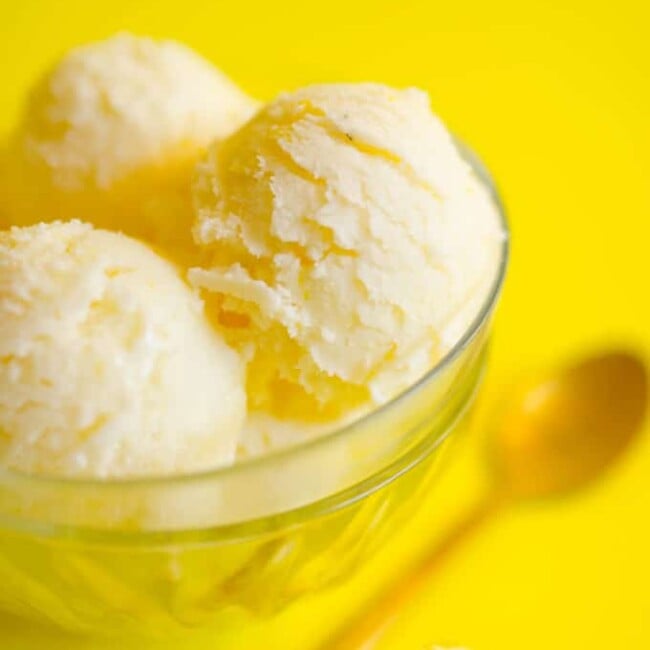

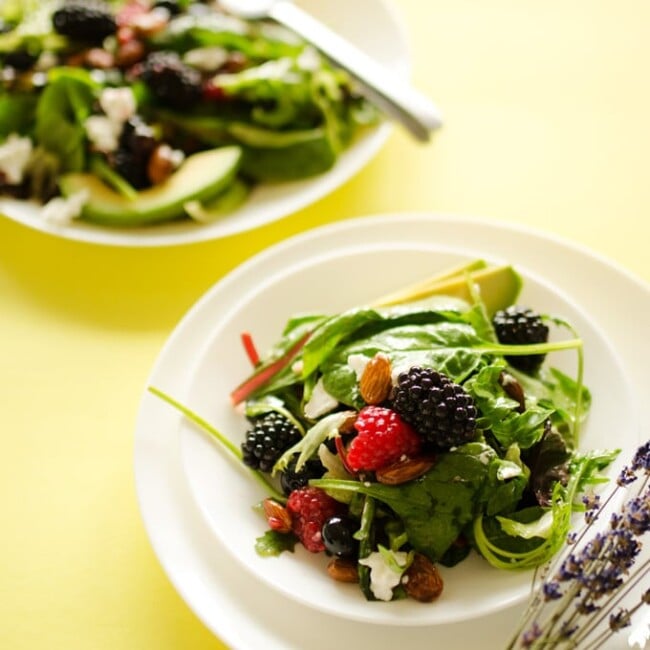
Leave a Comment